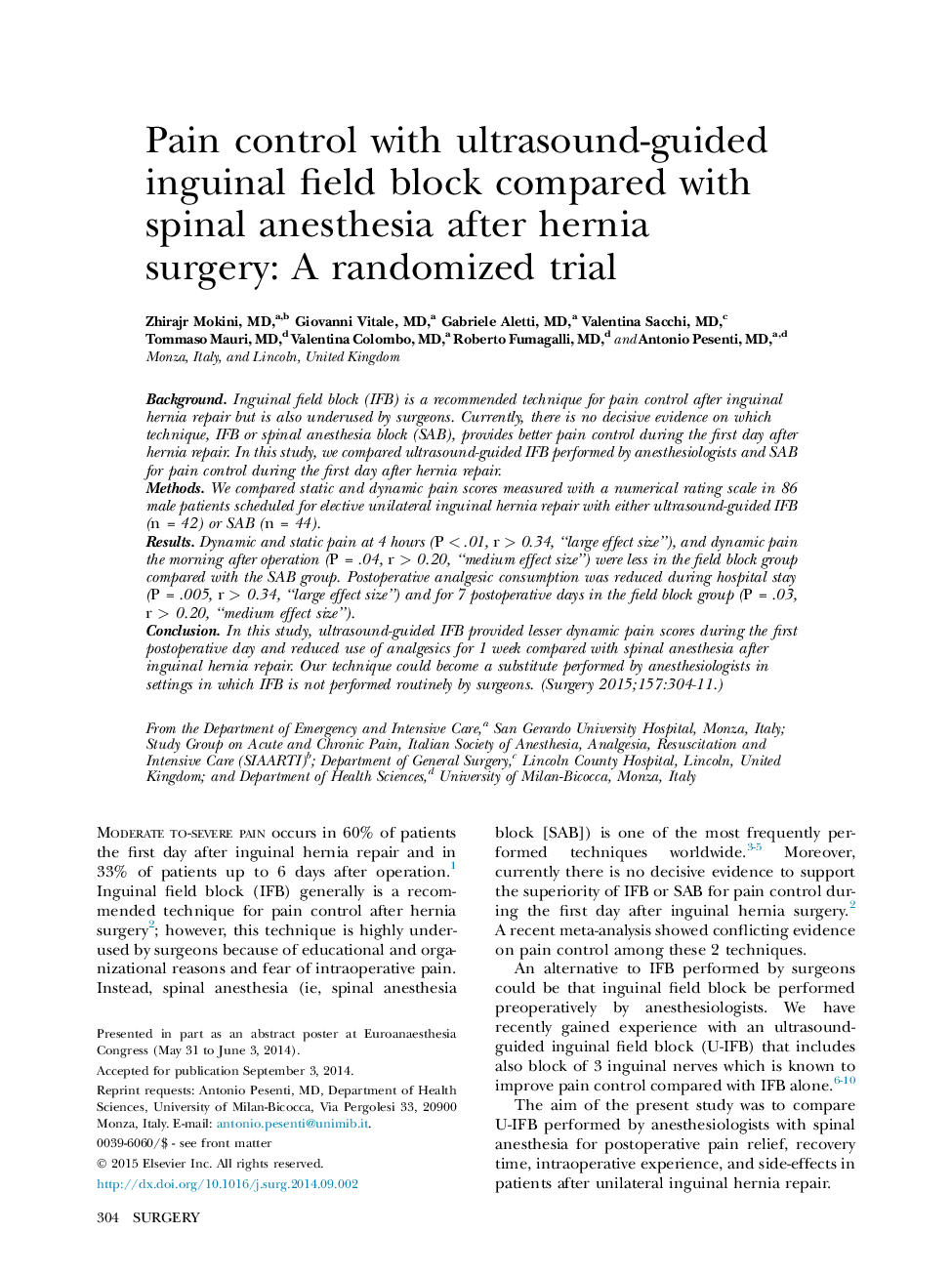| Article ID | Journal | Published Year | Pages | File Type |
|---|---|---|---|---|
| 6255488 | Surgery | 2015 | 8 Pages |
BackgroundInguinal field block (IFB) is a recommended technique for pain control after inguinal hernia repair but is also underused by surgeons. Currently, there is no decisive evidence on which technique, IFB or spinal anesthesia block (SAB), provides better pain control during the first day after hernia repair. In this study, we compared ultrasound-guided IFB performed by anesthesiologists and SAB for pain control during the first day after hernia repair.MethodsWe compared static and dynamic pain scores measured with a numerical rating scale in 86 male patients scheduled for elective unilateral inguinal hernia repair with either ultrasound-guided IFB (n = 42) or SAB (n = 44).ResultsDynamic and static pain at 4 hours (P < .01, r > 0.34, “large effect size”), and dynamic pain the morning after operation (P = .04, r > 0.20, “medium effect size”) were less in the field block group compared with the SAB group. Postoperative analgesic consumption was reduced during hospital stay (P = .005, r > 0.34, “large effect size”) and for 7 postoperative days in the field block group (P = .03, r > 0.20, “medium effect size”).ConclusionIn this study, ultrasound-guided IFB provided lesser dynamic pain scores during the first postoperative day and reduced use of analgesics for 1 week compared with spinal anesthesia after inguinal hernia repair. Our technique could become a substitute performed by anesthesiologists in settings in which IFB is not performed routinely by surgeons.
